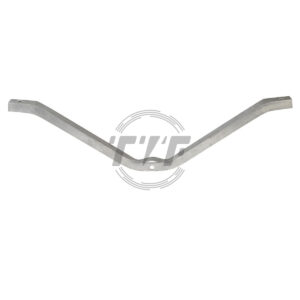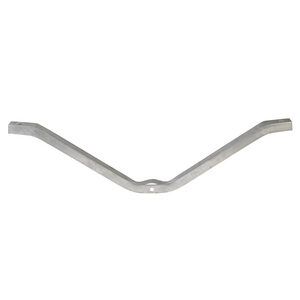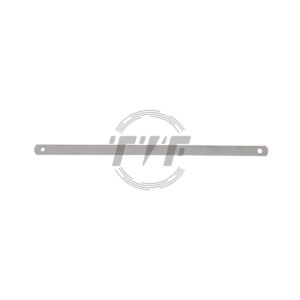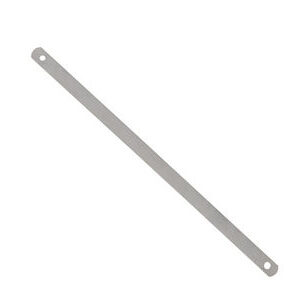Brace Crossarm
Crossarm braces connect the electrical crossarm by bolts and nuts. They support the electrical crossarm and make the power pole crossarm firm. The raw material of them is steel.
Showing 1–12 of 16 results
-

Double Span V-type Crossarm Brace, Length 42.00 in, Weight 8.04 lb
-

DOUBLE SPAN, V-TYPE CROSSARM BRACE, 48in SPAN x 14in DROP
-

DOUBLE SPAN, V-TYPE CROSSARM BRACE, 48in SPAN x 18in DROP
-

DOUBLE SPAN, V-TYPE CROSSARM BRACE, 72in SPAN x 18in DROP
-

Flat Steel Crossarm Brace
-

FLAT STEEL CROSSARM BRACE, 26in LENGTH, 24in MOUNTING HOLE SPACING, 1/4in x 1-1/4in MATERIAL SIZE
-

FLAT STEEL CROSSARM BRACE, 26in LENGTH, 24in MOUNTING HOLE SPACING, 7/32in x 1-7/32in MATERIAL SIZE
-

FLAT STEEL CROSSARM BRACE, 32in LENGTH, 30in MOUNTING HOLE SPACING, 7/32in x 1-7/32in MATERIAL SIZE
-

FLAT STEEL CROSSARM BRACE, 34in SPACING, 32in MOUNTING HOLE SPACING, 1/4in x 1-1/4in MATERIAL SIZE
-

FLAT STEEL CROSSARM BRACE,20in LENGTH, 18in MOUNTING HOLE SPACING, 7/32in x 1-7/32in MATERIAL SIZE
-

FLAT STEEL CROSSARM BRACE,28in LENGTH, 26in MOUNTING HOLE SPACING, 1/4in x 1-1/4in MATERIAL SIZE
-

FLAT STEEL CROSSARM BRACE,28in LENGTH, 26in MOUNTING HOLE SPACING, 7/32in x 1-7/ 32inMATERIAL SIZE
Read More
Brace cross arm is a tailored piece of complex equipment used in pole line technology to support power lines and other electrical equipment. Electrical cross arms are also known as telephone pole cross arms, light pole cross arms and pole cross arms.Types of Electrical Cross Arms
When it comes to selecting which cross arm to buy, you can choose from the various designs and kind of application. There are various types of electrical cross arms such as:
Power Pole Cross Arms
These are particular power poles used to connect conductors and insulators. The holes on it are used to steadfast the conductors and the insulators using bolts.
Line-cross Arms
These are sections of the cross arm found on the sides of the pole and are used for short and long transmissions. The connection is in a straight line and have special support at the base of the cross arm.
Side Arms
These are single arms of the same size attached on the sides of the pole with a little support from under the cross arm. They are also called braced horizontal arms.
Telephone Pole Cross Arms
They are the most extended arms as they provide different connections. It also allows more than two links on each cross arm.
Light Pole Cross Arms
These are the types of cross arms that are used to uphold lights such as street lights and also traffic light.
Fittings used with Electrical Cross Arms
U- bolt
Just as the name suggests, u-bolt is shaped in the form of the letter U and in has twines on each end. They are used for holding various segments on the electrical cross arm.
Pigtail Bolts
It is used on poles to hang dead end clamps, suspension clamps and electrical cross arms. It has a spiral end and threads on the other end. They are also known as pigtail screw, pigtail fastener and pigtail hook screw.
Double Arming Bolts
These are bolts that do not have heads or tails and have threads all over them. They have nuts to tighten the connections on the poles from both ends.
Features of Electrical Cross Arms
When choosing the type of electrical cross arm necessary to use, there are a number of features that you need to consider before buying the electrical cross arm. These are as follows:
Type of Material
The type of material to use vary depending on the company as most companies prefer to use wood as it can be able to resist the harsh weather conditions. Others use steel poles that are hot dip galvanized avoid corrosion for durability.
Shape and Design
There are two types of shapes and design to choose from which are the straight bar design and the V-shape design. The straight bar design it is easy to make and install which makes it the most preferred type of electrical cross arm used. The V-shape design requires extra support on the poles and does not give room for connection of multiple conductors and insulators hence, making it less used.
Holes
Fittings on the cross arm have to be intact in place thus the holes on the cross arm are accessible according to the size of the component to be attached.
Bolts and Nuts
These are mainly used to hold the different connection on the cross arm and to hold the cross arm to the pole.
Hot Dip Galvanization
The steel is immersed into molten zinc which in turn helps in preventing corrosion. This will ensure the cross arm performance is up to speed. Cross arms that use hot dip galvanized steel are able to last longer and lead to less maintenance costs.
Dimension
The specifications of the dimensions of the cross arms may vary as the customer has to specify the exact dimensions before they are produced from the manufacturer.
Weight
Since there are different materials used in making the electrical cross arms, the weights may vary thus affecting the general weight of the cross arms.
Tensile Strength
This is the maximum stress that materials can be able to withstand before breaking when it is stretched or pulled. The electrical cross arms need high tensile strength to be able to resist the varying harsh weather conditions.



